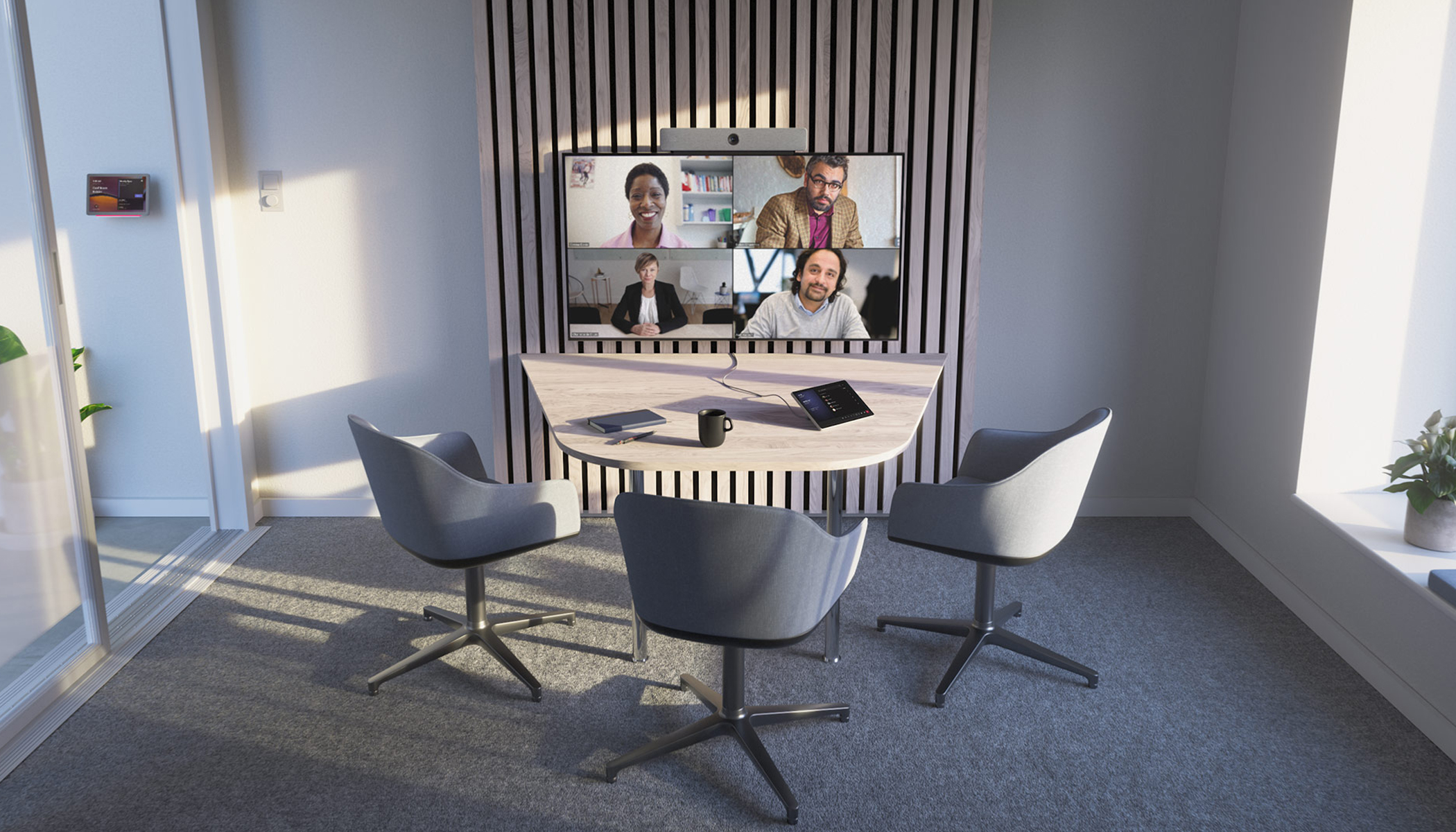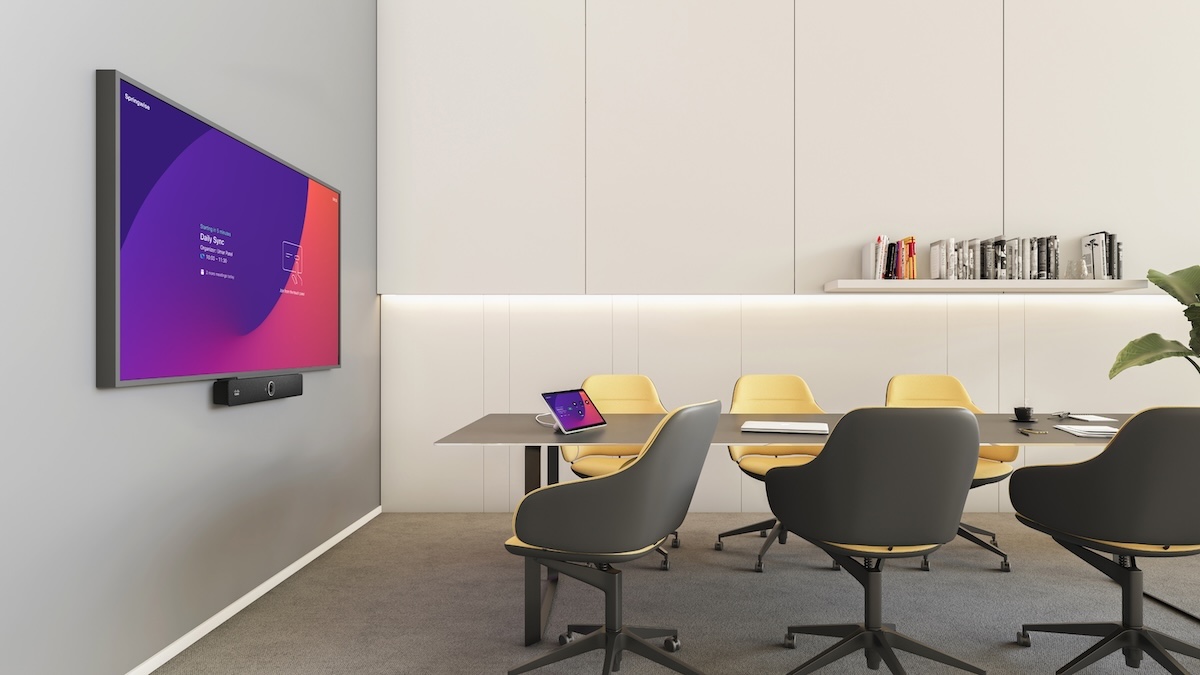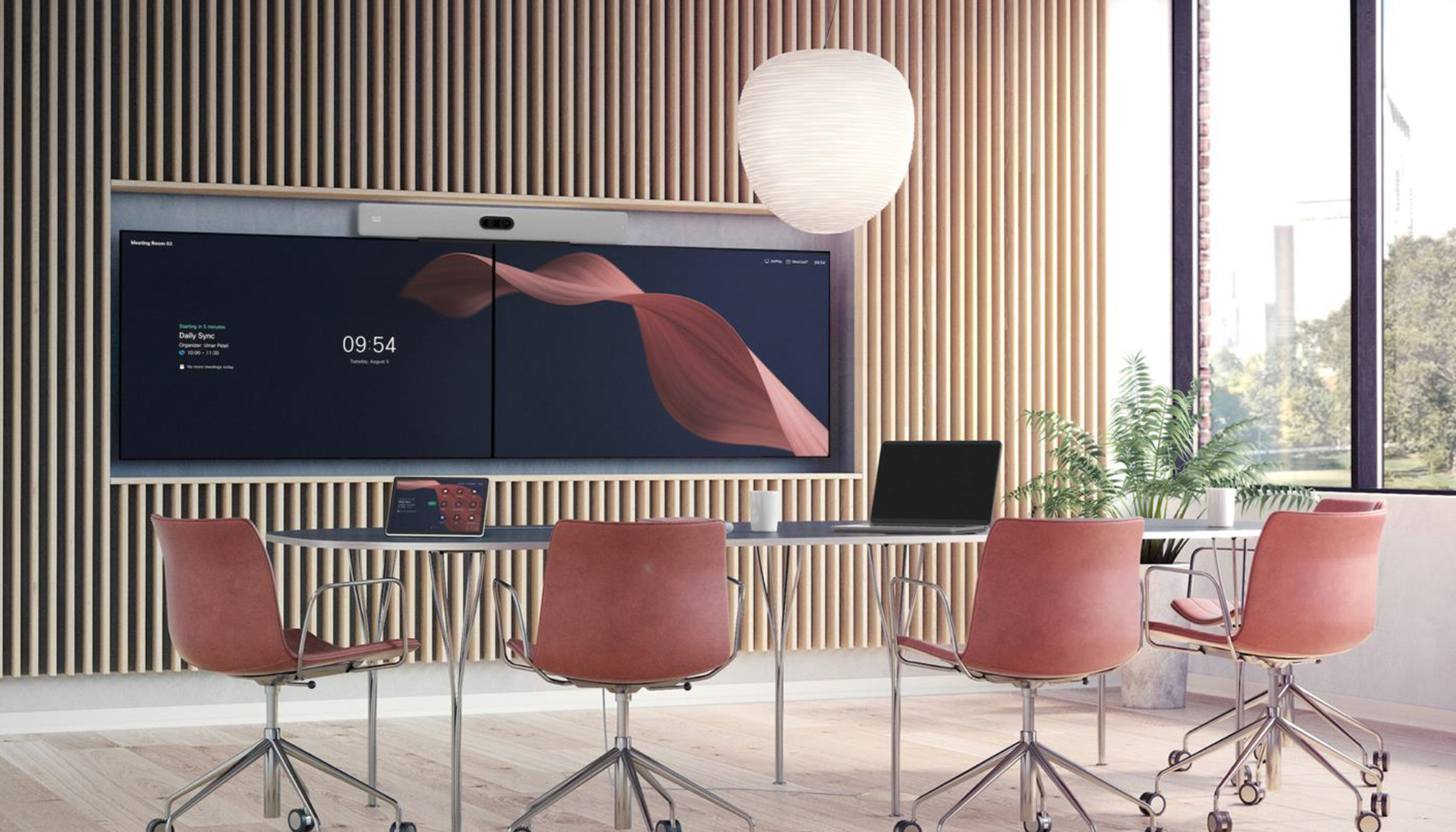For many years, Microsoft Teams Rooms customers have had to choose between Android or Windows-based solutions for their meeting rooms. Customers and partners have shared that Android devices are well-suited for smaller spaces but may lack some of the capabilities required for larger venues. Conversely, they’ve noted that Windows devices provide the capabilities needed for larger spaces but bring added complexity, which can make them more time-consuming to manage and maintain.
This split solution has led to inconsistent user experiences and operational inefficiencies. Users deal with different interfaces, and IT Teams have to divide their attention, increasing overhead and increasing vulnerability for security risks.
Microsoft Teams Rooms on Cisco RoomOS changes this by unifying meeting spaces, large and small, under a single platform. Our solution offers a consistent interface, unmatched capabilities, and a centralized management portal, making it easy to operate, highly powerful, and secure. Combined with the most comprehensive portfolio of Teams-certified collaboration devices, it’s designed to meet the needs of any space—from a hot desk to a large auditorium for town halls.
Cisco is paving the way for the future of seamless and efficient Microsoft Teams meeting rooms that more and more organizations, like TPG Telekom, are deploying to help their workforce remain connected and excel in modern hybrid work.
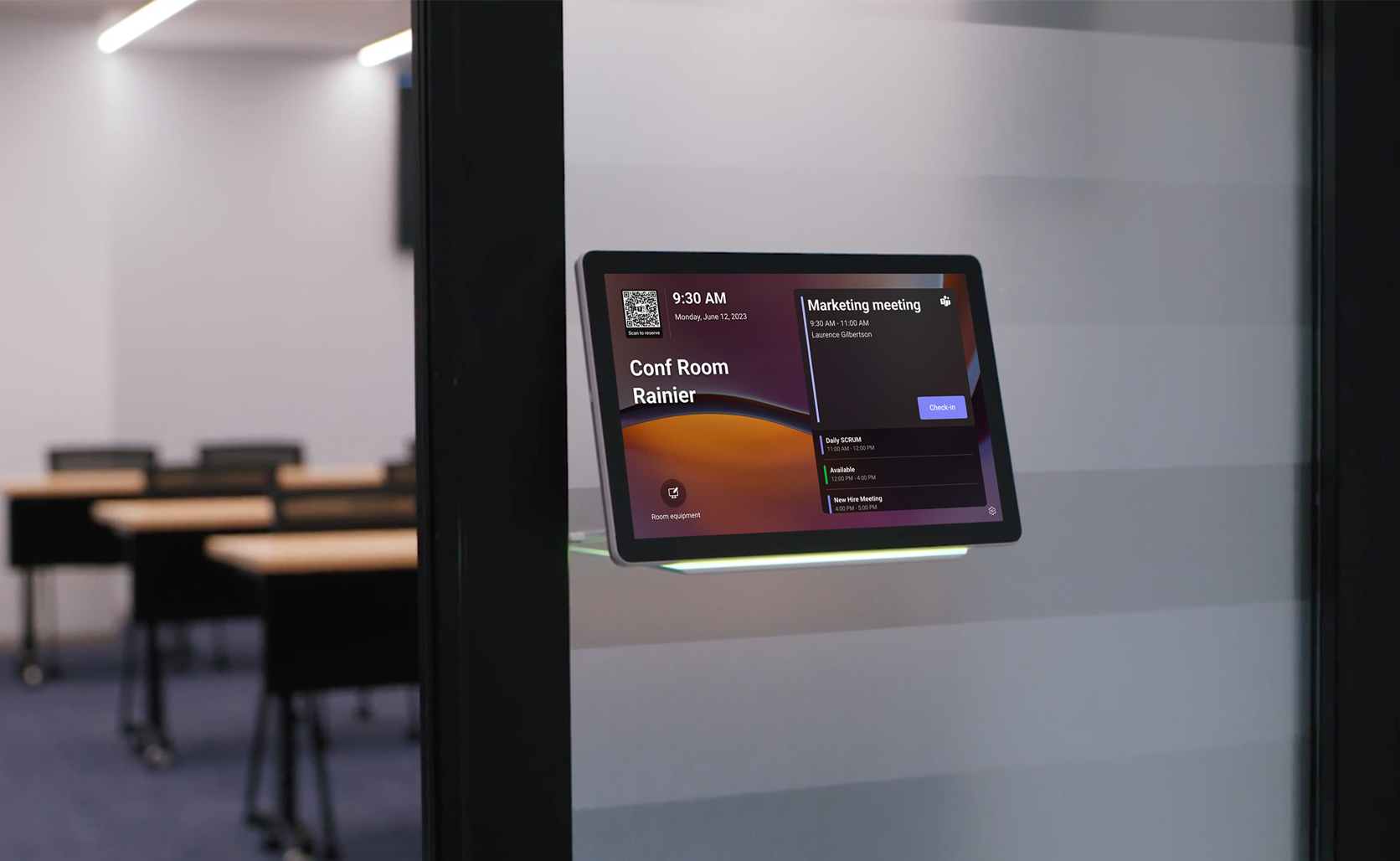
Cisco Room Navigator is now a certified Teams panel
The Cisco Room Navigator scheduling display is now available as a Microsoft Teams panel. This allows organizations to extend the Microsoft scheduling experience to any room. You can deploy it as a standalone room booking panel or pair it with a video system running Microsoft Teams Rooms within the workspace. With Teams panels, users can schedule, check the room calendar, make ad-hoc reservations, and check into their upcoming meeting via QR code.
This is one of three deployment options for the Room Navigator scheduling display when paired with Microsoft Teams Rooms devices from Cisco. The scheduling panels can also be configured with the Cisco Room Booking experience for smart automations and customized room booking workflows or run third-party workplace experience web applications like Appspace. All these options are compatible with Microsoft Teams Rooms on Cisco RoomOS, offering flexibility in how you set up and manage your meeting spaces —bringing intelligence to any hallway or shared space.

Enhanced local content sharing capabilities
Cisco has recently introduced an improved local sharing experience outside of video meetings, featuring amazing 4K content resolution with 30 fps frame rate, higher quality previews on Miracast, dual-screen sharing, the ability to view multiple input sources simultaneously, and enabling touch redirect for Windows computers.
The response has been overwhelmingly positive. Since this update, local sharing usage has more than tripled across our devices, boosting productivity and helping organizations maximize their meeting room technology. But don’t just take our word for it. As one customer put it: “4K local sharing makes Cisco devices superior to all other vendors”.
I encourage you to watch the following short video from Gabrielle showing how simple it is to share content on Cisco devices when running Microsoft Teams Rooms:
Meeting equity and simplicity for large meeting spaces
With one of the broadest portfolios of Microsoft Teams certified devices—including headsets, webcams, scheduling panels, all-in-one systems, video bars and kits — we’re empowering you to transform every meeting space into a hub of productivity and innovation.
When you bring Microsoft Teams Rooms to your larger rooms you can harness the power of Cisco RoomOS to deliver unique experiences. We have started to roll out multi-camera, cinematic meeting experiences, including Cross-view, Extended Speaker view, and intelligent PresenterTrack on Teams Rooms to help far end participants feel closer to the room than ever before.
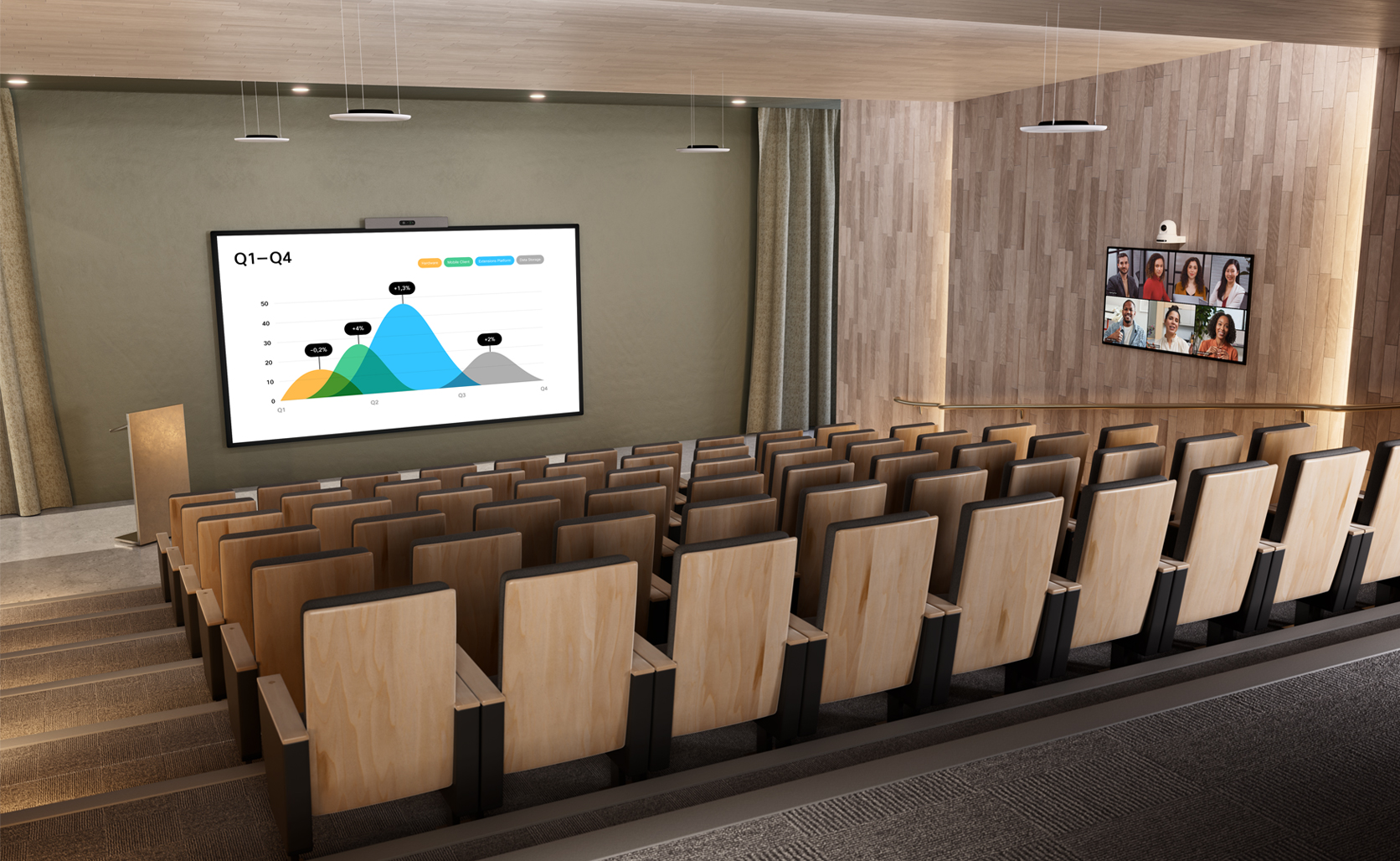
Audio quality is still the topmost meeting room frustration. With powerful audio intelligence and advanced processing that runs locally in the video device, you can block out noise from your meetings. And now with the new Cisco Ceiling Microphone Pro, you can bring AI adaptive, directional voice capture to any medium and large room to help remote participants hear everything clearly and feel included in the conversation.
Our devices provide seamless extension to help you get more value and solve more use cases on MTR. With Cisco, you can eliminate third-party equipment from the room to reduce complexity and increase reliability in your deployment. For instance, you can integrate ServiceNow into your device experience, run AppSpace for digital signage, or control lights, blinds and HVAC systems in the room without having to rely on third-party sensors and controllers.
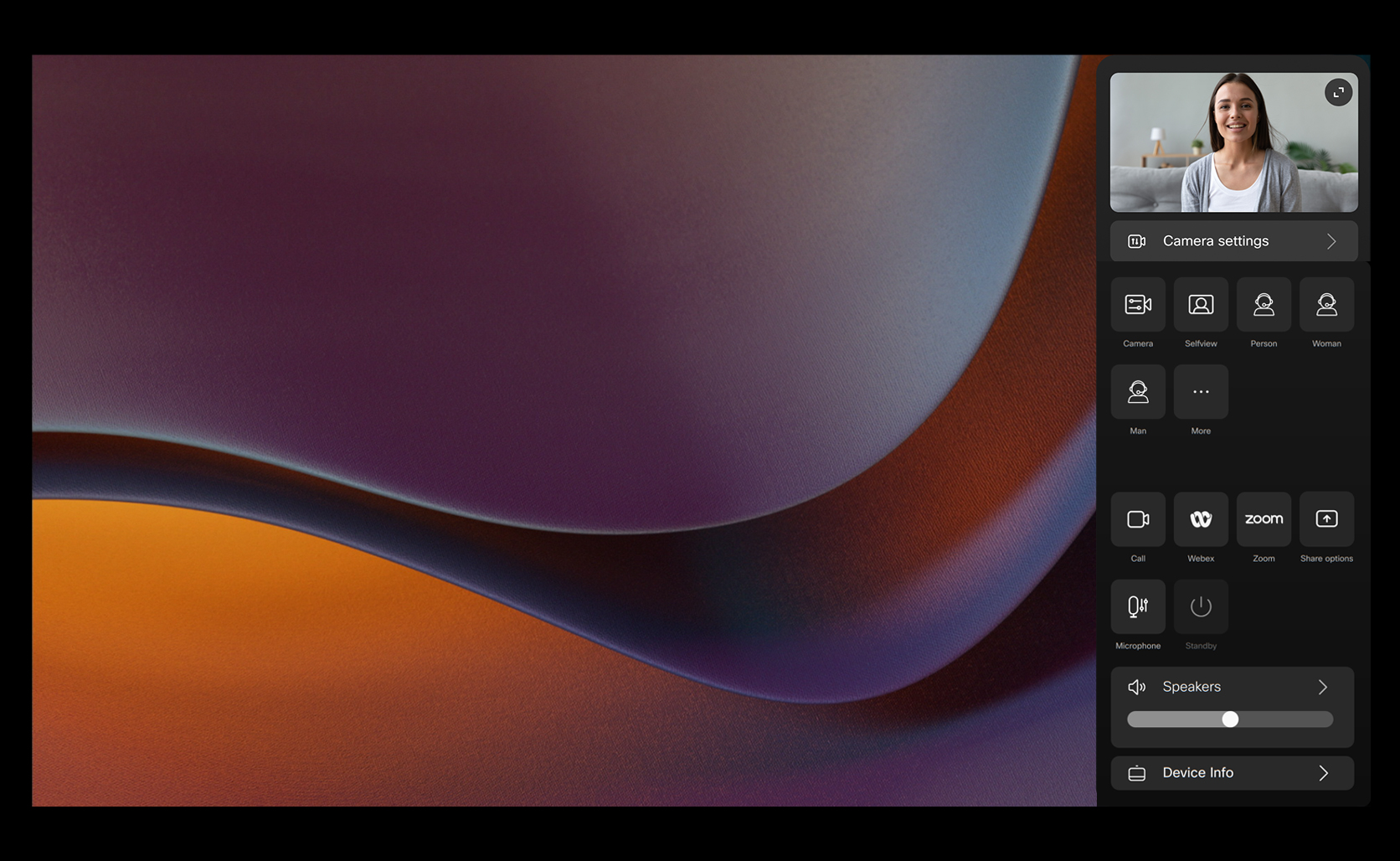
Gain better video interoperability on MTR
Cisco has made great strides in creating a seamless way to join any meeting efficiently and securely, no matter the video platform. Microsoft Teams Rooms on Cisco RoomOS is the first solution to offer two fully featured meeting platforms running side by side. This means you can deploy Microsoft Teams Rooms across your organization while still benefiting from advanced features on Webex.
With Webex as a secondary platform, you get fully featured Webex Meetings with one button to join. You can also start an instant Webex meeting at any time from the device control panel, ensuring business continuity. In addition, Cisco devices now allow you to join Webex Meetings in an ad-hoc fashion with a meeting ID and passcode. How great is that?
We’re enhancing the experience with our Zoom Conference Room Connector, providing a smooth SIP-based Zoom interop experience for Microsoft Teams Rooms. This update brings features like dual-screen support and sharing. Currently, you can join Zoom meetings via meeting ID, with full calendar integration coming to Microsoft Teams Rooms early next year.
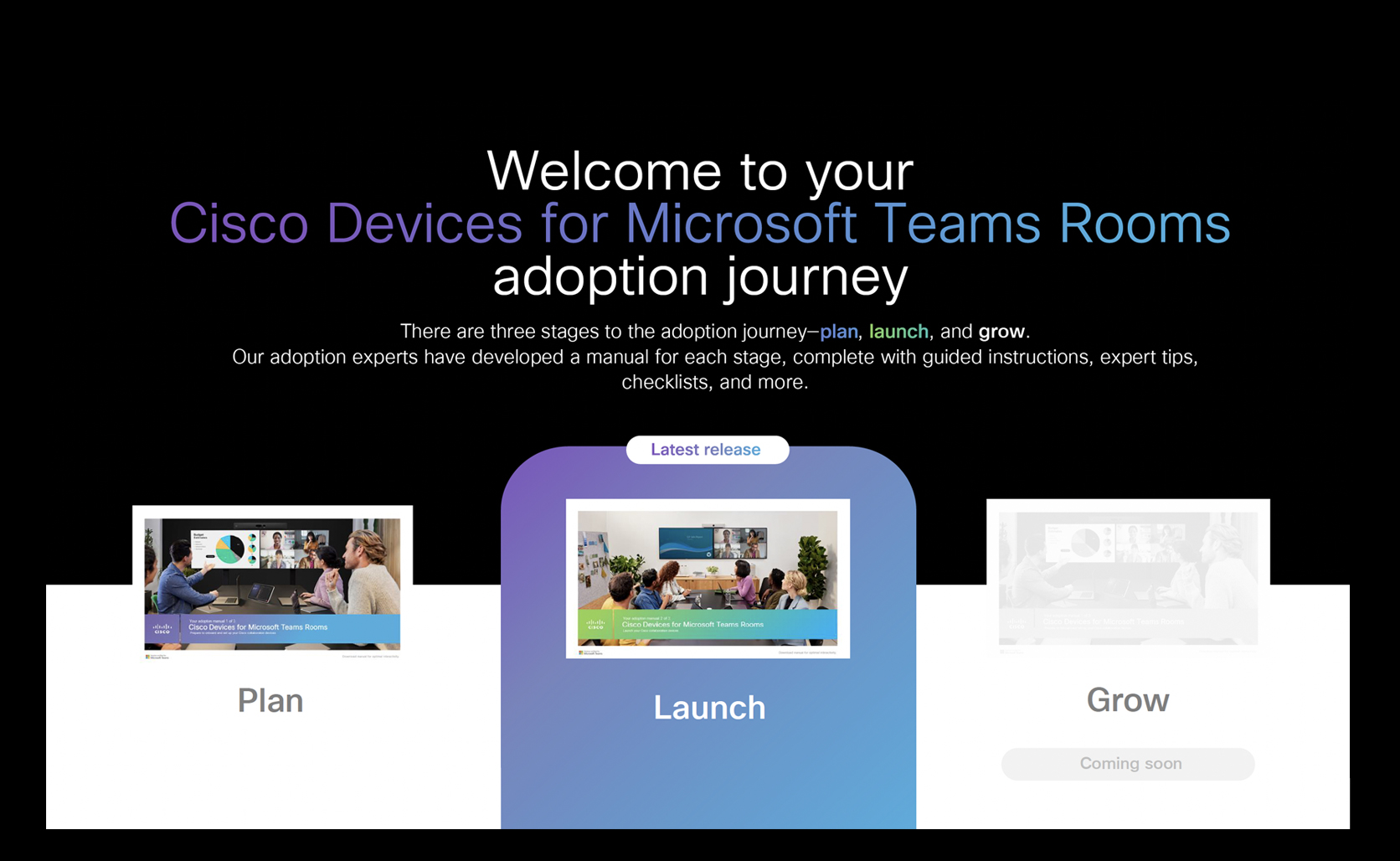
New Microsoft Teams Rooms adoption guides for Cisco Devices
We know that adopting new technology can be challenging, so our team has been releasing a series of adoption guidebooks to help you install, use, and maximize Cisco devices for Microsoft Teams Rooms.
The three stages of our adoption methodology are Plan, Launch, and Grow to guide you through the change management journey to ensure a successful transition at every step of the way. Our experts at Cisco have developed this series of manuals with guided instructions, expert tips, checklists, resources, and more.
We are excited to share that Plan and Launch are available now while Grow is coming soon.
Read Adoption Guide Part 1: Plan
Read Adoption Guide Part 2: Launch
Transition to AOSP Device Management for Microsoft Teams Rooms on Android
Microsoft is transitioning all Android devices to Intune Android Open Source Project (AOSP) device management, replacing the legacy Android Device Administrator. This mandatory migration applies to all Microsoft Teams Rooms on Android and Teams panels.
For Cisco collaboration devices running Microsoft Teams Rooms, the migration will start in early 2025, with AOSP-compatible firmware expected to roll out in February. While there are no changes to device functionality for end users, organizations must follow Microsoft’s migration guidance to ensure a smooth transition between MDM platforms.
Cisco documentation around AOSP
Looking ahead: Android 13 and MDEP
Cisco is committed to delivering the highest-quality Microsoft Teams Rooms experience well into the future. As part of this commitment, all certified devices are being upgraded to Android 13, with certifications expected to be completed by the first half of 2025. This upgrade ensures our devices remain future-ready, delivering extended certifications, enhanced performance, and robust support for the evolving needs of modern organizations.
Additionally, many customers have expressed interest in Microsoft’s Device Ecosystem Platform (MDEP), an Android OS built on the Android Open Source Project (AOSP). MDEP is designed to enhance device security and manageability—a vision closely aligned with Cisco’s own priorities. Cisco has long delivered industry-leading security and scalability through our containerized architecture and centralized management via Control Hub, ensuring organizations have secure, manageable solutions.
Looking ahead, we will continue to explore what longer-term opportunities a MDEP solution combined with Cisco’s unique, containerized architecture and Control Hub device management may bring to future Cisco devices. For now, customers can rest assured that their current Cisco devices certified for Microsoft Teams are designed to meet today’s needs and tomorrow’s challenges.
Cisco is going to exhibit at booth #401 at Microsoft Ignite in Chicago from 19th November 2024, showcasing the extensive Cisco collaboration device portfolio for Microsoft Teams Rooms, Splunk, security and observability solutions, alongside smart buildings and networking innovations.
Learn more:
- How to join a Microsoft Teams meeting on Cisco devices
- Exploring camera modes on Cisco Devices for Microsoft Teams Rooms
- TPG Telecom partners with Cisco and Microsoft to excel in hybrid work
- Read the first part (Plan) of our new Cisco Devices for Microsoft Teams Rooms adoption guidebook
- Read the second part (Launch) of our new Cisco Devices for Microsoft Teams Rooms adoption guidebook
